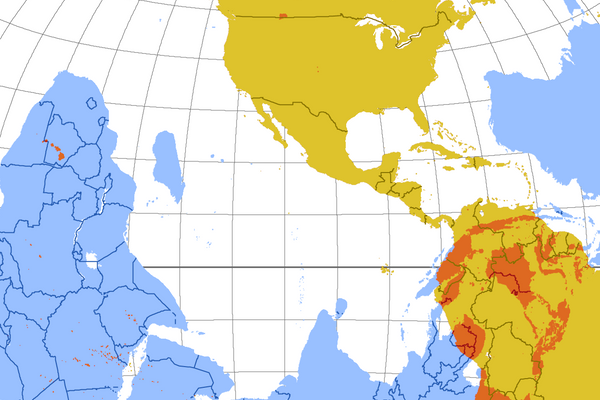Australia’s Entire GPS Navigation is Off By 5 Feet
And now they’re going to fix it.

A control marker set by the National Geodetic Survey to determine latitude and longitude. (Photo: Lee Cannon / CC BY-SA-2.0)
If you’re a regular user of satellite navigation services, you’ve likely noticed that the coordinates aren’t always pin-point accurate. If you’re in Australia, you might have noticed a strange consistency in this imprecision—specifically, that everything is about 1.5 meters (just under 5 feet) off the mark.
Now, the Australian government has launched a project to update the datum underpinning its satellite navigation coordinates, compensating for tectonic shifts that have pushed everything on the continent about five feet over from where it’s “supposed” to be.
Earth’s landmasses aren’t fixed in place; rather, Earth’s lithosphere (mantle and crust) is made up of numerous tectonic plates, which move over time. This movement explains the separation of Pangaea into the continents that exist today, earthquakes, island formation, and numerous other phenomena.
But satellite navigation systems aren’t somehow tracking the movement of Earth’s tectonic plates and updating their maps accordingly. In 2013, George Musser explained how sat-nav really works (and isn’t quite accurate) in a blog post for Scientific American. As he explains it, sat-nav relies on latitude and longitude grids—called datum—just like every other map. But not every system—again, just like maps—relies on the same datum. For example, the United States’ NAVSTAR Global Positioning System (one of only two operational global satellite navigation systems), uses WGS 84, which is tied to the Earth’s core rather than one tectonic plate, but most U.S. maps use NAD 83, which is tied to the North American tectonic plate. That’s why Google Maps is sometimes a little off, in case you were wondering.
As Dru Smith of NGS told Scientific American, the plate-based datum system is basically a compromise to keep surveyors from pulling their hair out. “Most surveyors and mapmakers would be happy to live in a world where the plates don’t move,” Smith explains. “We can’t fix that, but we can fix the datum so that the effect is not felt by the predominant number of users.”
As for Australia, it currently relies on the Australia-specific GDA94 datum developed in 1994. Because the eastern part of the Indo-Australian tectonic plate is moving about 5.6 centimeters per year (2.2 inches), the data has become increasingly inaccurate over the past two decades.
Five feet isn’t a big deal when you’re getting directions to a nearby town, but as satellite navigation becomes increasingly used in systems that need pinpoint accuracy (think self-driving cars) that little offset becomes a much bigger problem. The increasing need for precision tracking is what motivated Geoscience Australia to establish the AuScope Global Navigation Satellite System (GNSS) network, which is underpinning the GDA2020 effort that will update Australia’s geocentric datum, bringing it in line with the International Terrestrial Reference Frame used in other regions.
The new datum will initially map to where the Australian continent will be located in the year 2020 (hence the name). According to The Register, that means when it first comes into use in 2017, it’ll be about 20 centimeters off. Then, in 2020, phase 2 of the project starts and the project gets really interesting. Phase 2 will synchronize the datum with GNSS, allowing “locations of points and their movement over time to be modelled,” meaning the datum should be continuously up-to-date.
So, what about every other country’s sat-nav? We’re all on tectonic plates, and they’re all moving, right? Right—and as we refine our understanding of the planet’s size and shape, our datum will need to be updated too, eventually. In the U.S., the National Geodetic Survey plans to update NAD 83 in 2022; when that happens, latitude and longitude points in North America will shift at least a meter.
“We’re fast approaching the day when people will expect accuracies of centimeters in real time out of their handheld devices and then we’ll see a lot of head scratching as things no longer line up,” Smith told Scientific American three years ago. It looks like that day has arrived.










Follow us on Twitter to get the latest on the world's hidden wonders.
Like us on Facebook to get the latest on the world's hidden wonders.
Follow us on Twitter Like us on Facebook